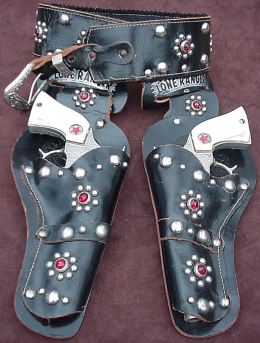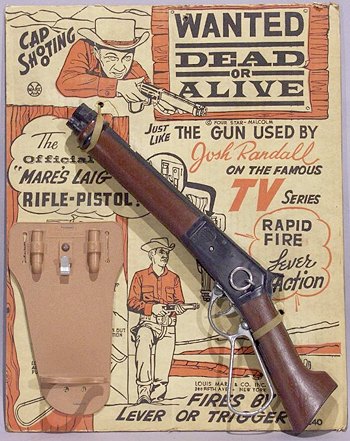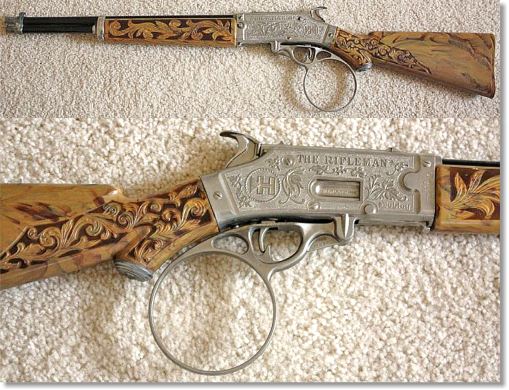“Some are born to endless Night”: Dead Man and Blake
Jim Jarmusch’s Dead Man is an undeniably mysterious film. The protagonist, accountant William Blake, is mistaken for the other famous William Blake, the mystic/visionary English Romantic poet. Some of you may be familiar with Blake from the literature courses you’ve taken, but he may be an unknown to others. As you ponder the film for class tomorrow, I’d suggest reading up on him a bit.
Here are three short resources that start to characterize Blake’s importance to the film.

The “Psychological” Westerns of Anthony Mann and Budd Boetticher
Mann and Boetticher each made a group of films in the 1950s that set the standard for what critics have called the “psychological” western – a turn toward dark, gloomy, and tormented protagonists and bleak plots that certainly influenced the work of directors like John Ford and helped pave the way for even darker revisionist westerns of the 1960s and 1970s. Here are lists of their films. While Boetticher worked exclusively with Randolph Scott in his “Ranown Cycle,” Mann primarily used James Stewart, but also directed other actors associated with the genre.
Anthony Mann
Winchester ’73 (1950, James Stewart)
The Furies (1950, Barbara Stanwick)
Devil’s Doorway (1950, Robert Taylor)
Bend of the River (1952, James Stewart)
The Naked Spur (1953, James Stewart)
The Far Country (1954, James Stewart)
The Man from Laramie (1955, James Stewart)
The Last Frontier (1955, Victor Mature)
The Tin Star (1957, Henry Fonda)
Man of the West (1958, Gary Cooper)
Budd Boetticher
Seven Men from Now (1956)
The Tall T (1957)
Decision at Sundown (1957)
Buchanan Rides Alone (1958)
Westbound (1958)
Ride Lonesome (1959)
Comanche Station (1960)
Final Week: The Votes are In

Promotional poster for Deadwood, Season One.
The votes are in and, although it was relatively close, our final Wednesday night screening will consist of two episodes from the first season of the HBO series Deadwood. Depending on how our semester is going at that point, I might use some in class time to talk about – and possibly screen – clips or episodes from some earlier TV westerns.
The final vote was: Deadwood – 12, Meek’s Cutoff – 9, Sukiyaki Western Django – 6. Both Meek’s Cutoff and Sukiyaki Western Django are now possibilities for Short Essay #2.
Bang! Bang! Bang!
One of the most recurrent sounds of Shane (1953) is Joey Sharrett’s “Bang! Bang!” as he imagines his toy gun firing at the bad guys. Shane‘s 1953 debut corresponds to a moment where toy makers exploited this fascination with western violence, and Joey’s mimicking of gun sounds might be seen as a commentary on the toy industry’s capitalizing on the juvenile fascination with western violence. The “cap gun” was one of the most popular toys for American boys from the late 1930s through the early 1960s. These guns were branded with the names of famous cowboy figures in film serials and feature films, from Gene Autry, Roy Rogers, and the Lone Ranger, through popular 1950s television shows like Gunsmoke, The Rifleman, Wanted: Dead or Alive, and Have Gun – Will Travel. Images of some of these guns are below, but the Nichols Cap Gun website has a trove of additional images.





John Ford’s Sound-era Westerns
John Ford is the director most associated with the western, and some call him the best director in the history of American cinema. In his biography of Ford, Joseph McBride writes, “At the famous meeting in October 1950 when the Screen Director’s Guild was torn apart of the issue of the Hollywood blacklist, the leading figure in the guild, who had been sitting in enigmatic silence throughout the evening, finally rose to address his colleagues. ‘My name is John Ford,’ he said. ‘I am a director of Westerns'” (416). Although he directed a number of silent, feature-length westerns, I know of only four that survive in complete or near-complete prints: Straight Shooting (Universal, 1917), Bucking Broadway (Universal, 1917), The Iron Horse (Fox, 1924), and 3 Bad Men (Fox, 1926). During the sound era, however, he produced a number of important films in the genre, including three we are watching in class. His entire western output during this period is below:
Stagecoach (Walter Wanger /United Artists, 1939)
Drums Along the Mohawk (Fox, 1939) – “Pennsylvania Western”
My Darling Clementine (Fox, 1946)
Fort Apache (Argosy/RKO, 1948)
3 Godfathers (Argosy/MGM, 1948)
She Wore a Yellow Ribbon (Argosy/RKO, 1949)
Wagon Master (Argosy/RKO, 1950)
Rio Grande (Argosy/Republic, 1950)
The Searchers (Warner Bros., 1956)
The Horse Soldiers (Mirish/United Artists, 1959)
Sergeant Rutledge (Warner Bros., 1960)
Two Rode Together (Columbia, 1961)
The Man Who Shot Liberty Valance (Paramount, 1962)
Cheyenne Autumn (Warner Bros., 1964)
History of American Cinema volumes
Here is a list of the volumes in the University of California Press’s History of American Cinema series, along with links to their records in the JMU library catalog. With off-campus library access, you can read these as eBooks.
- Vol 1: Charles Musser, The Emergence of Cinema: The American Screen to 1907
- Vol 2: Eileen Bowser, The Transformation of Cinema, 1907-1915
- Vol 3: Richard Koszarski, An Evening’s Entertainment: The Age of the Silent Feature Pictures, 1915-1928
- Vol 4: Donald Crafton, The Talkies: American Cinema’s Transition to Sound, 1926-1931
- Vol 5: Tino Balio, Grand Design: Hollywood as a Modern Business Enterprise, 1930-1939
- Vol 6: Thomas Schatz, Boom and Bust: The American Cinema in the 1940s
- Vol 7: Peter Lev, Transforming the Screen, 1950-1959
- Vol 8: Paul Monaco, The Sixties, 1960-1969
- Vol 9: David A. Cook, Lost Illusions: American Cinema in the Shadow of Watergate and Vietnam, 1970-1979
- Vol 10: Stephen Prince, A New Pot of Gold: Hollywood Under the Electric Rainbow, 1980-1989
1930s B Westerns
Overland Stage Raiders (Sherman, 1938), trailer:
[youtube wAIx0XefUbw 604 364]
Riders of Destiny (Bradbury, 1933), with John Wayne as “Singin’ Sandy Sanders.” Wayne croons at the opening of the film:
[youtube pcMAXuVNX8 604 364]
Ford’s shots
In class, I mentioned Ford’s consistent fascination with shooting from interior spaces into exterior ones (such as the fight scene in The Iron Horse). Here is that shot from The Iron Horse, followed by a more famous scene that is framed in a very similar fashion.
And here’s a shot from Ford’s first feature film, Straight Shooting (1917), featuring Harry Carey.
The First of the West
Here are links to the films we watched in class today:
Buffalo Bill’s Wild West: Annie Oakley (Edison, 1894), Buffalo Dance (Edison, 1894), Bucking Broncho (Edison, 1894)



